Please Don’t Ride the Elephants
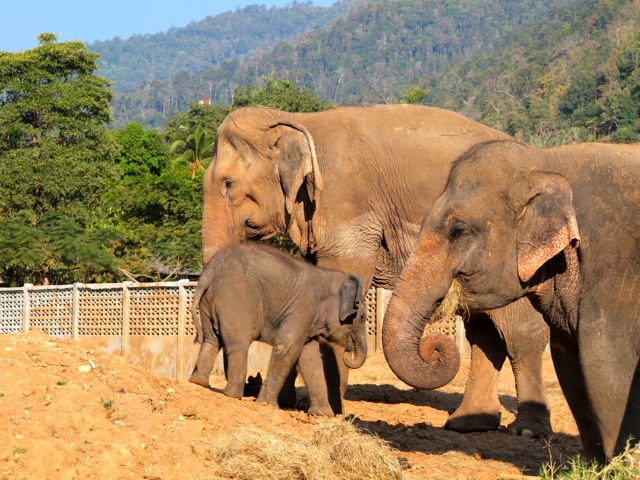
You know how when you go to a zoo (or maybe to a park with lots of wildlife), they have those “Please don't feed the animals” signs up all over the place?
Well, today I have a very similar plea:
Please don't ride the elephants.
Not long ago, when I first started thinking about my travel bucket list, “riding an elephant in the jungle” was something I dreamt of someday doing — right up there with riding a camel in the desert and a horse on a beach.
But then I started learning snippets of the truth about elephant tourism, and I quickly struck that item off my list.
In Southeast Asia, elephant tourism is a booming business. You'll see baby elephants making paintings for paying tourists, young elephants performing on the streets, and endless ads for elephant trekking camps that allow you to ride that elephant in the jungle.
But, knowing what I know now about the plight of elephants in Asia, I would advise you to avoid ALL of these things.
“Training” elephants
Elephants are very intelligent animals, and are definitely capable of being trained. Unfortunately, the “training” that happens in Thailand (and many other places in Asia) has nothing to do with positive reinforcement and everything to do with torture and fear.
At a very young age, elephants are captured in the wild and put through a phajaan ceremony. It's very misleading to call this a “ceremony,” however, because it's more like torture. The Phajaan is also often known as “the crush” because it involves tying the young elephants up in a very small cage so that they can't move — crushing their bodies. Then they are beaten, poked, sleep-deprived, and starved for up to a week — crushing their spirits. (You can see videos of this, though they are very disturbing to watch.)
Many of them die.
Those that survive the phajaan emerge broken in every sense of the word — and now fear humans enough to listen to any command they are given.
These elephants go on to be the ones you see in circuses, or painting those pictures, or in those trekking camps in the jungle. In these “jobs,” the elephants are often chained up, prodded with bullhooks, and sometimes even shot with slingshots. Other “trained” elephants go into the illegal logging trade, which is perhaps the worst fate for an elephant; many die young from broken backs and other injuries.
Aren't Asian elephants endangered?
One hundred years ago, there were hundreds of thousands of wild elephants in Asia. Today? That number is just in the thousands. Deforestation and other development has claimed the elephants' natural habitat over the last 100 years, leading to Asian elephants being considered an endangered species.
So why are people able to enslave them?
It's a funny thing, the relationship Asia has with elephants. In the Hindu and Buddhist religions, elephants are sacred. But the animals have also been used for centuries as work animals, and are now integral to the tourism industry.
And, once an elephant goes through the phajaan ceremony in Thailand, it is then considered nothing more than domestic livestock; it is no longer a wild elephant that can be protected.
In recent years, the elephant-powered logging industry has been banned in Thailand. But many mahouts simply take their elephants over the border into Burma, or just continue logging illegally in Thailand. They need to make a living, too, they argue.
And elephant tourism in Thailand has only increased. Everyone, after all, wants to ride an elephant in the jungle.
Getting to know elephants
During my recent trip to Thailand, I spent time at an elephant sanctuary called Elephant Nature Park. It is run by a woman named Sangduen “Lek” Chailert, who may be one of the most inspirational people I have ever met.
Lek lives her life for the elephants. She has been disowned by her family, blacklisted by the Thailand Tourism Authority (because she shows people videos of the phajaan), and has even had threats made on her life. But still she has persisted in her mission to rescue abused elephants and give them a safe place to live out the rest of their lives.
ENP has a growing herd of elephants — the number currently stands at more than 40 — that have all been rescued from depressing situations. Many came to the park with broken bones, infections, landmine injuries, or blind eyes. And all arrived with broken spirits.
RELATED: Get to Know Elephant Nature Park
Lek treats these elephants like her children. She sleeps outdoors with them if they are anxious; she sings them lullabies to soothe them to sleep; she strokes their trunks and scratches their ears and looks at them with nothing but love in her gaze.
And the elephants respond to it.
Despite what they have been through, the elephants at ENP have adapted to life at the sanctuary. They have formed family groups; some have even conceived and given birth to adorable (and mischievous) baby elephants. They play in the mud and roll around in the river. They mourn friends and adopted family members when they pass away.
If I learned anything at Elephant Nature Park, it's that these creatures are much more than “just animals.”
They are emotional. They are smart. They are full of personality.
And they are not animals that should be used for any tourist's amusements.
Please don't ride the elephants
I'm not dedicating this whole post to Elephant Nature Park, though (I'll save that for next week — stay tuned!). Instead, I'm dedicating it to the elephants.
People who have gone to Thailand and ridden elephants aren't evil; they aren't bad people.
But, more likely than not, they were uneducated. Uneducated about how these elephants are trained, and uneducated about the fact that an elephant's back — big as it is — is not actually strong enough to carry heavy loads. It's why many of the elephants at ENP have suffered broken hips and legs and even backs back during their logging and trekking days.
Yes, ENP rescues elephants from sad situations when it can. But the organization's larger goal is to turn the uneducated into the educated.
Because, the more educated we are, the better decisions we will be able to make when we travel.
So I'm begging you.
Please.
Don't ride the elephants.

Amanda Williams is the award-winning blogger behind A Dangerous Business Travel Blog. She has traveled to more than 60 countries on 6 continents from her home base in Ohio, specializing in experiential and thoughtful travel through the US, Europe, and rest of the world. Amanda only shares tips based on her personal experiences and places she's actually traveled!


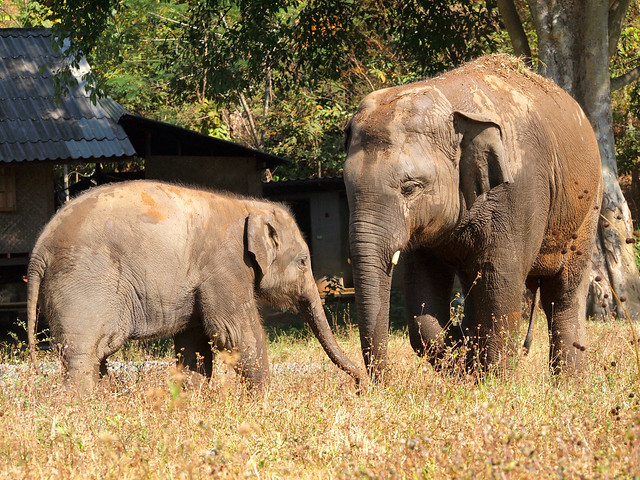



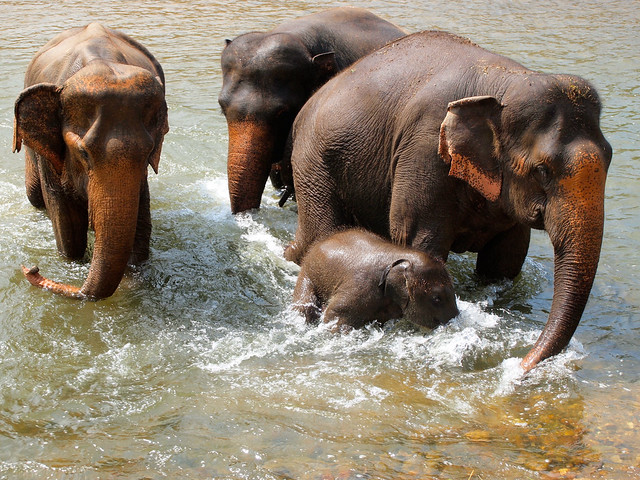
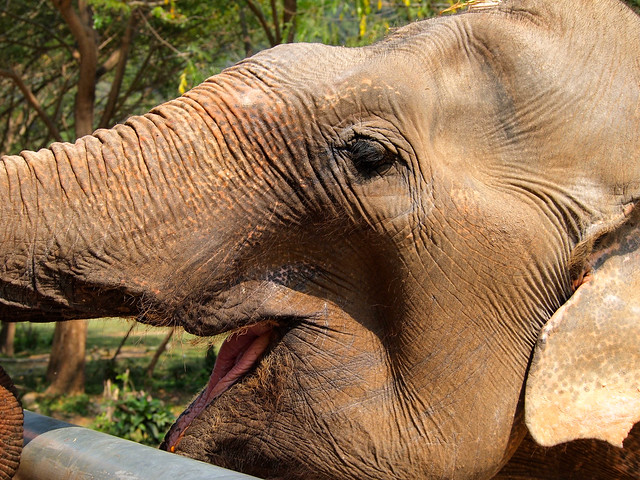

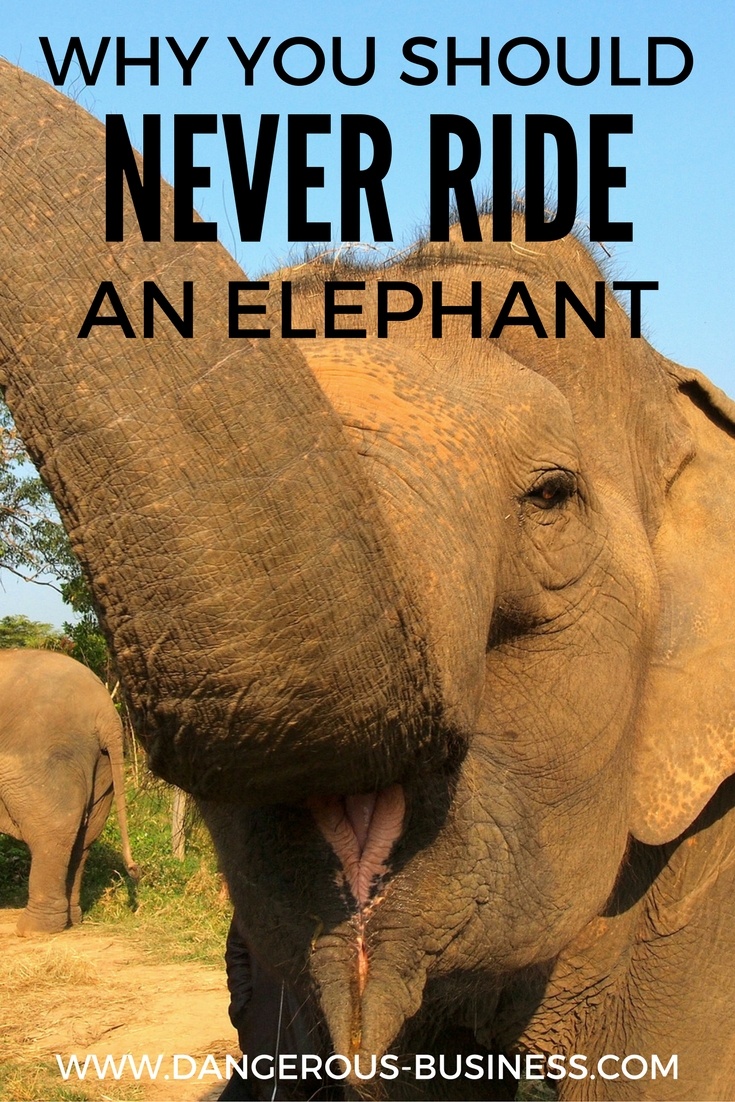









I had no idea that’s how they ‘domesticate’ elephants, how heartbreaking 🙁 I am sadly one of those people who rode an elephant on my first trip to Thailand because I was clueless as to how awful it would be. My guide didn’t use a metal hook but he did have a big bamboo stick that he would slap the elephants head with. My poor elephant was covered in scars. After getting off, I looked into the elephants eye and cried a bit andapologized to it for what he had gone through. sounds silly but it’s all I could do 🙁 never again and I tell anyone I can about how terrible it is so even if I’m able to change only one persons mind about doing it I’ll feel good about it.
Your experience is similar to many others’, Katrina! Most people just have no idea. They assume that the elephants must like the work they’re doing (after all, “they’re so big!” and how could a human really MAKE them do anything?). I’m glad though that now you try to educate others! That’s really the best any of us can do.
[…] they drug the animals, no matter how tempting that new Facebook profile picture sounds. And please don’t ride the elephants — consider volunteering with them […]
[…] these beautiful creatures and develop a deeper love and appreciation for them — and to learn what they suffer through in other parts of […]
Great post Amanda,
Apart from Elephant Nature Park around Chiang Mai, there are many national parks accross whole Thailand where elephants can be seen in wild. One of best parks is Khao Yai National Park, not so far from Bangkok;
I would love to see elephants in the wild!
I am so glad you wrote this post, this way many people can see it and hopefully change their minds about riding elephants. All my friends post photos on elephants from their travels in Thailand, but I am the only “weirdo” who didn’t do it. Even my dad asked me why don’t I have photos on elephant, since all his facebook friends post these kind of photos. I told him that it breaks my heart to see them being abused by people and also being stung with a big pointy metal bar (that’s what I saw for real) while being ridden. I feel really sorry for them, seeing their SAD EYES under the happy people riding them. It truly breaks my heart and after reading what you described here about the “ritual” they use for training them, I have tears in my eyes 🙁
Many people just don’t realize how cruel elephant “training” is. I’m sure if more people knew, they wouldn’t be riding elephants.
I was so heartbroken when I first heard about this! But thanks for putting this out there for people to read and understand. Traveling ethically is important and awareness is key with that.
Thanks, Daryl. I definitely agree with you – ethical travel is important, but we can’t be ethical if we aren’t aware of what’s unethical out there!
I couldn’t agree more, upon seeing how they are treated on my visit in Thailand this is just too cruel!
It really is quite sad. Hopefully the more people we tell about it though the better it will become for the elephants!
[…] ago, I put “volunteering with elephants” high up on my bucket list. I knew about the plight of the Asian elephant, and I also knew what Elephant Nature Park was doing to try to combat it. Of all the elephant parks […]
[…] I visited Elephant Nature Park, I had only a basic knowledge of the plight of the Asian elephant, and hardly any knowledge at all about how elephants live and form […]
Thank you so much for writing this! I didn’t know all these details, like about the elephants being ‘crushed’ at a young age, but I’m not really surprised. It’s terrible hearing stuff like this but so important at the same time to spread awareness. It was hard enough for me to watch some scenes in the film ‘Water for Elephants’…I hate to imagine how often this happens in real life.
Beautiful pictures by the way- I love the close up of the elephant’s eye!
Oh my gosh, I just watched “Water for Elephants” again on TV yesterday, and yeah, there are moments in that movie that make me SO SAD, especially now that I’ve learned so much more about elephants.
Wow! What a great and powerful post. It’s so sad to hear. Hopefully, more people will read and hear about this and stop riding the elephants. I want to go on a safari one day, but to see them in their natural habitat, not to ride them (I’m just too much of a chicken!) thanks for writing this.
I’m doing my best to help spread the word!
I have to confess, I did ride an elephant in Laos in 2009, back when I was a naive backpacker before I knew better. Nowadays, I would urge anyone I talk to about it not to.
Well it’s good that you’ve changed your mind about it, Sam! That’s the most important part.
Heartbreaking. And something we all need to know and internalize. Thanks for this insightful post, Amanda.
Thank YOU, Shivya. Knowing that people are responding to this so much means a lot to me!
Such a great post on such an important issue. Too few people know about this!
Thanks! And I agree – more people need to know!
It is so great to see more and more people catching on to this. We worked at Elephant Nature Park for 7 months and were very close with Lek. She taught us a lot about what goes on with Elephants (as well as many other animals when it comes to Animal entertainment) It is great to educate tourists but hopefully the owners of these elephants will wake up sooner then later and realize that they are not machines.
We decided to go to a few trekking camps to see what really goes on and it is heartbreaking. People get so happy when they see an elephant paint a picture or shoot basketballs through a hope. It was very depressing to see how many people enjoyed these shows.
We have also written a blog about the truth about Elephant tourism and we invite you to check it out. Thanks so much for speaking up.
I agree – it’s the elephant owners who really need to change their attitudes. If only they could see that people are willing to pay even MORE money to visit a place like ENP, knowing that they are helping to do some good rather than just seeing elephants perform. If more of the camps in that area would follow ENP’s example, think how great it would be for everyone!